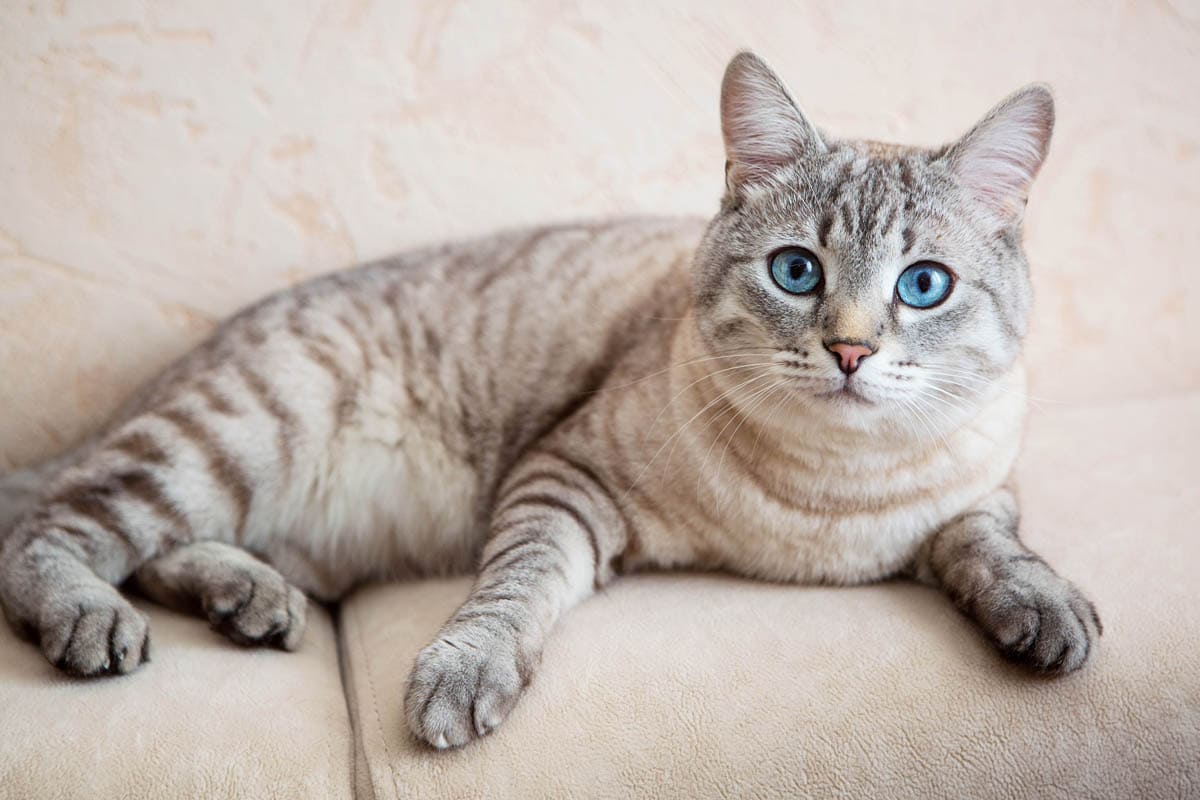While bloody diarrhea in humans is known to be a red flag, it is something we see quite commonly in cats, especially kittens. They have delicate intestines and can develop bloody diarrhea for all sorts of reasons.
Most of the cats I see in my clinic with these signs can be managed from home with some simple strategies and are back to normal within a few days. Less commonly, the bloody diarrhea is a sign of something more sinister, and we may need to run some tests and to provide more specific therapy.
What does bloody diarrhea in cats look like?
Diarrhea is characterized as stool that is loose, soft or liquidy. It is passed more frequently than regular stool and can be accompanied by flatulence (farting). We may see some blood spots or clots on the surface, or the entire stool might contain blood
Digested blood will be a dark black color, while undigested blood is pink or bright red. Digested blood originates in the upper GI tract (i.e. stomach and small intestines), while fresh blood tends to come from the large intestine, rectum or anus.
Alongside blood in the stool, we may also see mucus, which looks like slime or snot.
In the following photo, the blood is bright red and the stool is poorly formed.
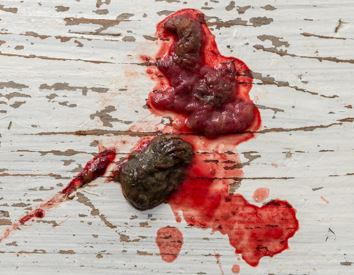
In this photo, we can see some darker blood mixed into the loose, unformed stool.
Both photos demonstrate quite a significant amount of blood in the stool, and would warrant an urgent vet visit.
Is bloody diarrhea an emergency?
Bloody diarrhea is always abnormal, but not necessarily always serious.
A small amount of blood loss in a cat with diarrhea is common and can often be managed from home if the cat is otherwise well.
Bloody stool would be considered an emergency if there is a significant amount of blood loss, the cat has pale gums, there is concern for a toxicity or the cat has other symptoms such as vomiting, lethargy, food refusal or weakness.
Top reasons causing a cat to have bloody diarrhea
-
Parasites
Almost all young kittens have a parasite burden, which is why we want to treat them for internal parasites regularly from the age of 3 weeks old.
They can be infested with worms (such as hookworm or roundworm) as well as other parasites like Giardia and Coccidia. Many parasites are microscopic, so won’t be seen in the stool.
Signs of internal parasites include:
- Bloody stool
- Increased hunger
- Bloating
- Dull fur
Parasites can be easily treated with anthelmintics. These should be broad acting products, recommended by the cat’s vet.
In some cases, a stool analysis is advised, to identify the parasite and provide the best treatment.
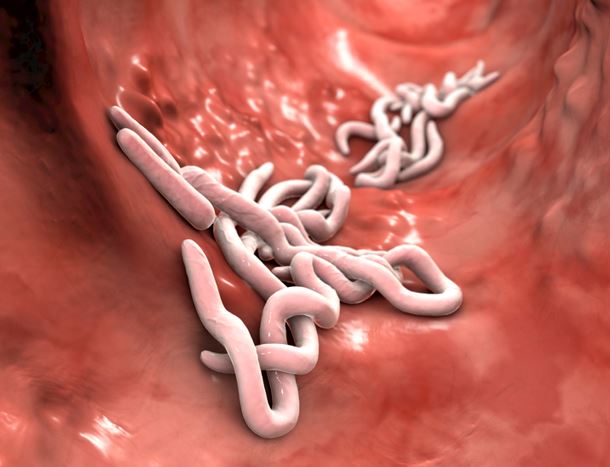
-
An abrupt diet change
Sensitive cats won’t tolerate their diet being changed quickly, as this can lead to colitis (an inflamed colon). Symptoms include:
- Loose stool
- Fresh red blood or mucus within the stool
- Straining to pass stool
- Mild lethargy
- A reduced appetite
To prevent this from happening, diet changes should be made gradually over the course of 3-5 days. Owners should try and be consistent in what they feed their cat.
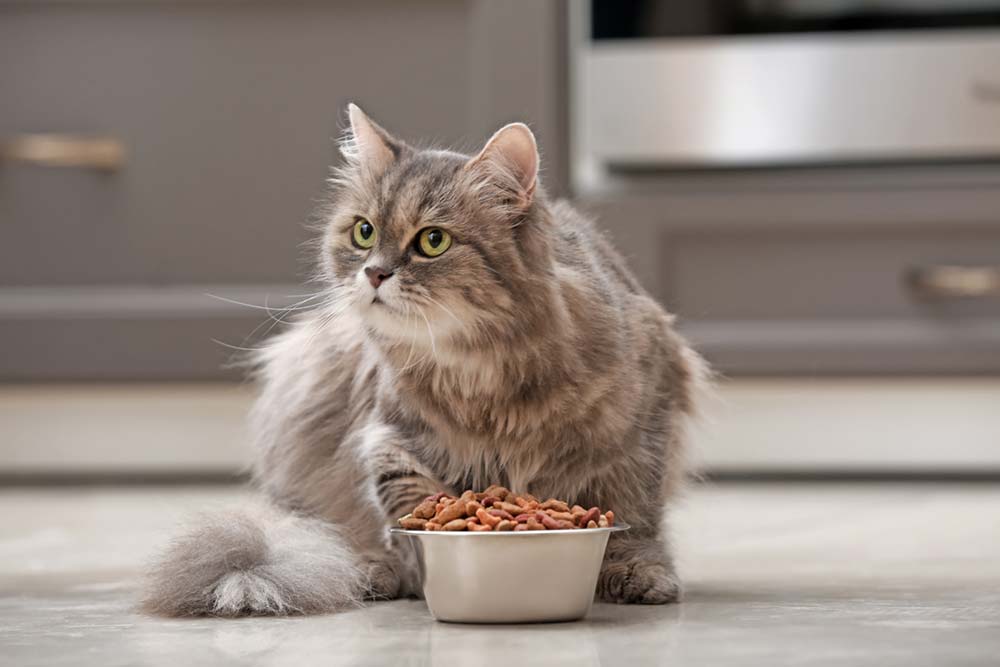
-
Dietary indiscretion
Just like most animals, cats don’t always make good food choices! They may choose to eat some rotten meat they find outside, or perhaps to drink from a dirty puddle.
This can cause a stomach upset and other signs like:
- Persistent vomiting
- Bloody stool
- Lethargy
- A reduced appetite
- Dehydration
While we cannot control what our cats do, it makes sense to ensure they are well fed at home, and to keep bins closed and out of their reach.
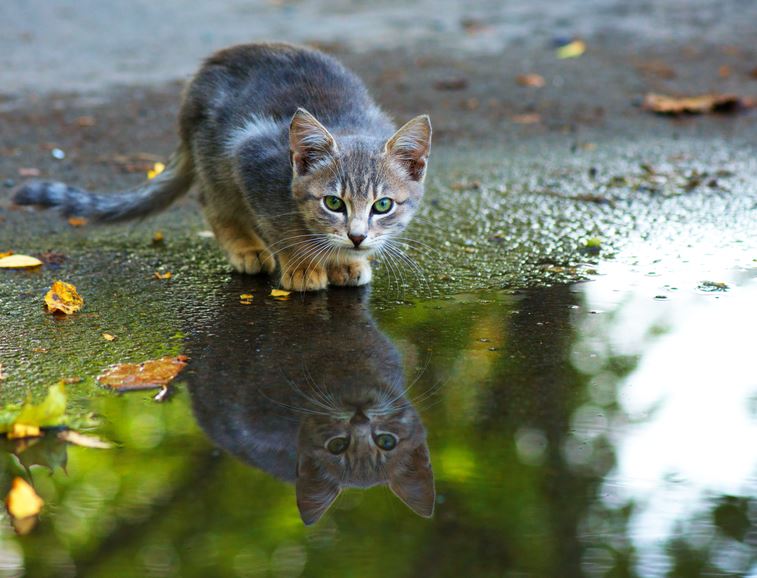
-
An infection
A wide range of infections, including viral and bacterial infections, can affect the gastrointestinal tract and make your kitty poorly. For most cats, infections are short-lived and cats recover within just a few days, after their immune system has dealt with the pathogen.
We may see signs such as:
- Sleeping more
- A reduced appetite
- A fever
- Bloody, loose stool
- Vomiting
- Drooling and nausea
For many healthy kitties, they can deal with mild infections well, with a little TLC from us. This can mean a bland diet and plenty of rest and water.
Some cats become quite poorly, and need veterinary intervention, which may include a fluid drip and IV antibiotics.

-
A recent toxicity
Sadly, toxicities are not uncommon in our feline friends, particularly in those who go outside. One of the more common and worrying toxicities that can cause bloody stool is rat bait toxicity.
Cats can become affected when they eat poisoned vermin or when they ingest the rat bait itself.
As these poisons cause internal bleeding, we can see:
- Pale gums
- Fast breathing
- A bloated abdomen
- Bloody diarrhea and bloody vomit
The sooner this toxicity is treated by a vet, the better the prognosis. They may induce vomiting if the ingestion was recent. The cat will also be started on Vitamin K, to prevent clotting issues.
What you can do at home now to help
If you’ve noticed bloody stool, take a picture to show your vet and collect some in a clean, plastic container in case your vet wants to send a sample. Check around the home for any potential toxins and see if your cat’s diet was recently changed. Do also ensure they are up to date with their wormer. It is sensible to start a bland diet (like boiled chicken and rice) and to start some probiotics, to settle the gut. Take a look here, for some further helpful hints: Home Remedies For Cat Diarrhea
When to see your veterinarian
Owners who are concerned for their cat, should never hesitate to book them in. This is especially true if the cat is very young or old, or if they have underlying medical issues.
Book an appointment if your cat is not themself, or if this bloody diarrhea is persisting.
Signs you need to watch for
We tend to worry more when there is more than a tablespoon of blood or when the cat has other symptoms, like pale gums, vomiting or lethargy.
Importantly, if there is any chance your cat has ingested a toxin, have them seen as an emergency. Quick treatment means a better prognosis.
Veterinary treatment options
Diagnosis
Most cases of mild bloody diarrhea are managed symptomatically. We do not run tests, as the cat should improve quickly with time, some temporary changes to their diet and with a course of probiotics or antibiotics.
When a cat is poorly or when the issue persists, tests are recommended. This can include a stool analysis, blood test and abdominal scan.
Treatments
Milder cases of bloody diarrhea can be treated with rest, wormer, a bland diet and some probiotic anti diarrhea paste. As well as offering water, we can give our cats a rehydration solution, to help keep them well hydrated.
In some cases, cats may need more specific therapies from their vet, such as a prescription diet or antibiotics.
